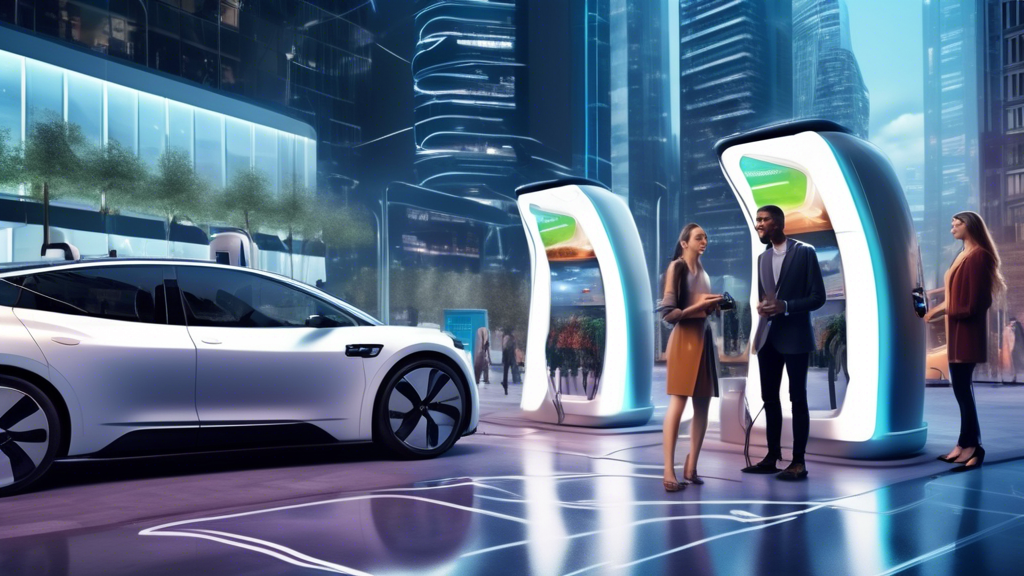Is the electric vehicle revolution speeding up or slowing down in your region? Charging infrastructure is expanding rapidly across major areas, promising to make EV ownership more convenient and appealing. Recent statistics reveal impressive growth in charging stations, with key regions leading the charge—pun intended.
Governments and private companies are fueling this expansion. Much like coffee shops on every corner, soon you’ll find EV chargers easily accessible wherever you go. But what’s driving this electrifying development?
Technological advances are playing a major role. Faster and more efficient charging technologies are rolling out, and renewable energy sources are being integrated into charging systems. Imagine needing only a short pit stop to power up or even charging wirelessly while you park. These innovations aim to make the EV experience smoother and greener.
As charging infrastructures grow, so do EV adoption rates. A robust network bolsters consumer confidence, making the switch to electric more attractive. After all, convenience is king. And with future projections indicating exponential market growth, it’s an exciting time to consider an EV.
Ready to plug into this trend? The expanding charging infrastructure is not just a promise—it’s happening now. Don’t miss out on the electric wave sweeping across the roads!
Expansion of Charging Stations Across Major Regions
How rapidly are electric vehicle (EV) charging stations multiplying across the globe? The numbers tell a compelling story.
Overview of Current Charging Infrastructure Statistics
The global EV charging infrastructure is surging ahead. According to recent data, there are now over 1 million public charging points worldwide. While some areas still lag, urban centers show impressive growth. More than 55% of all charging stations exist in China and Europe, leading the charge.
In 2020, the number of publicly accessible chargers jumped by 45%. This exponential growth indicates mounting enthusiasm and investment in EV infrastructure.
Key Regions Experiencing Significant Growth
China dominates the global market, boasting close to 50% of the world’s public charging points. Major cities like Beijing and Shanghai see thousands of new installations annually. This rapid development positions China as a pioneer in EV adoption and infrastructure growth.
In Europe, countries like Norway and Germany show tremendous progress. Norway, for instance, doubles its network almost every year. Public and private investments have spurred this expansion, making EV ownership more attractive.
The United States, while not lagging, has significant regional disparities. California leads by a wide margin, but other states like New York and Texas are catching up. Federal incentives and legislation, such as tax credits and grants, drive these developments.
Government and Private Sector Initiatives Supporting Expansion
Both the private sector and government entities actively support the rollout of charging stations. In China, the government directly funds many public charging networks. Policies and subsidies aim to create a seamless charging experience for urban and rural areas alike.
Europe takes a multifaceted approach, combining public funding with private initiatives. The European Green Deal allocates billions of euros for EV infrastructure development. In tandem, companies like Ionity and Tesla push forward with extensive charging networks.
In the U.S., initiatives like the $5 billion Electric Vehicle Infrastructure Training Program (EVITP) aim to standardize and expand charging networks. Not to be left out, corporations like General Motors and Ford also invest heavily in charging solutions, each committing billions to bolster infrastructure.
Can you imagine a world where recharging your car is as convenient as refueling? As these developments unfold, that vision nears reality.

Technological Advancements in Charging Solutions
Have you ever wondered how far we’ve come with electric vehicle (EV) charging technologies? Let’s look at the remarkable advancements driving this sector.
Introduction of Faster and More Efficient Charging Technologies
The demand for swift charging is skyrocketing. Gone are the days when waiting hours for a full charge was acceptable. Enter ultra-fast chargers like Tesla’s Supercharger V3 and other DC fast chargers, which can inject hundreds of miles of range in mere minutes. No one likes to wait, especially not for a car charge, right?
This push towards faster charging isn’t only met by automakers. Companies like ChargePoint are collaborating with utility firms to establish a network capable of rapid and reliable charging
Integration of Renewable Energy Sources in Charging Infrastructure
Why not charge your EV with the power of the sun or wind? Integration of renewable energy sources into charging infrastructure is no longer a futuristic concept. Solar-powered charging stations are popping up across regions, offering green energy for your EV.
Take Envision Solar’s EV ARC, for instance. It’s a mobile, solar-powered charging solution capable of delivering renewable energy anywhere. Innovations like these cater to the environmentally conscious driver who wants to reduce their carbon footprint.
Innovations in Wireless and Mobile Charging Options
Forget cables and plugs; wireless charging is on the rise. Technologies using induction pads allow EVs to charge wirelessly, much like your smartphone. Imagine just parking your car and walking away, knowing it’ll be charged when you return.
Companies like WiTricity and Plugless are at the forefront of these innovations. Additionally, mobile charging solutions, such as mobile power banks, are being developed to meet on-the-go charging needs. No more searching for charging stations – the charger comes to you!
With these advancements, EV charging is not just keeping pace but setting new standards of convenience and efficiency. Isn’t it time you considered joining the EV revolution?

Impact on Electric Vehicle (EV) Adoption Rates
How does the growth of charging infrastructure influence EV sales? The correlation is undeniable. As charging networks expand, potential EV buyers feel more confident in their purchasing decisions. They see increased convenience in recharging, akin to refueling traditional gasoline cars.
The growth of charging stations plays a pivotal role. By providing easy access to charging points, the infrastructure addresses range anxiety, a common barrier to EV adoption. More stations mean drivers see fewer limitations on where they can travel, easing concerns about running out of power.
A significant boost in consumer confidence accompanies this expansion. Imagine planning a long road trip in your EV without anxiety about finding a charging station. The widespread availability of chargers makes this scenario a reality. Prospective buyers are more likely to consider an EV, knowing they won’t be stranded without power.
Moreover, convenience is a key driver. The ability to charge quickly and efficiently at various locations—workplaces, shopping centers, and even curbside—makes owning an EV more practical. Users appreciate the flexibility to charge while they go about their daily routines, making EVs an attractive option over traditional vehicles.
Future projections indicate continued growth in EV sales, driven by enhanced charging accessibility. Market analysts predict this trend will only gain momentum. More accessible charging solutions result in greater EV adoption, leading to a cleaner, greener future.
The surge in charging infrastructure marks a pivotal shift in the electric vehicle (EV) landscape. Expansion across major regions is more than a statistic; it symbolizes a global transition towards greener transportation. With regions like North America, Europe, and parts of Asia witnessing prolific growth, both government policies and private sector investments play crucial roles. Initiatives fostering this expansion not only cater to current demands but also anticipate future needs.
Technological advancements further catalyze this growth. Introducing faster, efficient charging solutions and integrating renewable energy sources open new avenues for sustainability. Innovations in wireless and mobile charging reshape user experiences, making recharging more convenient and accessible than ever. These technological strides promise a future where charging an EV can be as seamless as refueling a conventional car.
This well-developed infrastructure profoundly impacts EV adoption rates. There is a clear correlation between more charging stations and increased EV sales, driven by rising consumer confidence and convenience. Projections suggest this growth trajectory will continue, suggesting a robust, interconnected network of charging solutions in the near future. As we embrace these advancements, the path to widespread EV adoption becomes not just probable, but inevitable. The strides made in charging infrastructure today pave the way for a cleaner, more sustainable tomorrow. So, are you ready to plug into the future?
